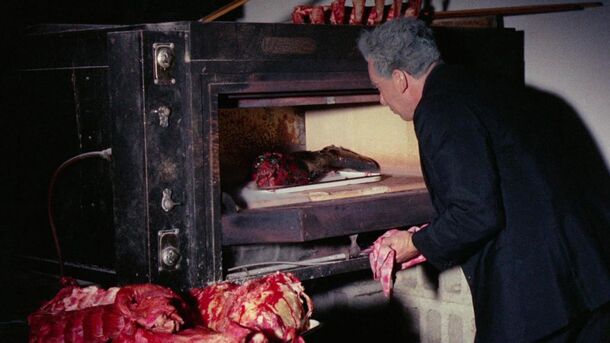Stephen King Called This Forgotten 60-Year-Old Horror Classic the Worst Movie He Ever Saw

Well, it was probably not that bad.
What was the worst horror movie you have ever seen? Everyone will have their own answer to this question, because let's face it, no other genre has such a large number of outright failed projects.
Stephen King, one of the biggest horror fans of our time, also has an opinion on this matter. The writer admitted which of all the horror movies he has seen was the worst:
“What is the worst horror movie you ever saw? For me, Blood Feast.”
What is Blood Feast About?
Movies exploiting bloody shock content appeared much earlier than most viewers think. The pioneer was the same movie King hated, Blood Feast, released in 1963.
The plot tells about the crazy exotic products seller Fuad Ramses, who imagines himself to be the high priest of the cult of the goddess Ishtar. He prepares her "resurrection" according to ancient customs and thereby puts the whole city on alert. Because he needs the body parts of the murdered women.
Blood Feast Gave Birth to the Entire Horror Subgenre

The low-budget horror movie by Herschell Gordon Lewis shocked the audience with the violent attraction where dismemberment was in the foreground. The script in the movie was frankly of secondary importance, and in fact was only a connecting link in a series of sickening murders.
By today's slasher and splatter standards, however, Blood Feast is not all that bloody. But in the early 60s it was something that gave birth to a subgenre of horror called gore.
In Blood Feast, the director turns on the wild imagination to the fullest, savoring the violence in close-ups and long shots. And of course, it was the shameless dismemberment that made the movie a hit, earning the creators tens of thousands of dollars. Made on a budget of $24,500, Blood Feast grossed as much as $4 million.
Blood Feast Was a Predecessor to Many Cult Slasher Movies
.jpg)
At the time of its release, the film outraged ordinary viewers and even Lewis' colleagues with its gore, but as is now clear, the director only showed what many fans of horror films actually wanted. Halloween, Friday the 13th and A Nightmare on Elm Street were still to come, with much more blood and torn bodies.
Blood Feast is first and foremost a film of its time, which today is not as shocking as it was sixty years ago, because the madman with his freakish appearance is more funny than scary.
But at the same time, Blood Feast exudes the author's vision – Lewis filmed exactly the way he wanted, regardless of the inevitable criticism from colleagues and viewers.
Lewis had a long film career ahead of him, while the world had a growing fascination with horror films, and Blood Feast became an exhibit that, while not frightening today, deserves respect for the birth of an entire horror subgenre.